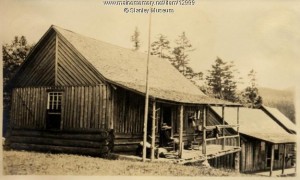Join the nationwide celebration of
National Hunting and Fishing Day
Saturday, September 22, 2012
http://www.nhfday.org
National Hunting and Fishing Day has been called the most effective grassroots campaign ever undertaken to promote hunters, anglers and the conservation benefits they provide for all Americans who appreciate wildlife and wild places. Hunters and shooters have paid nearly $336 million in excise taxes and more than $5 billion since 1939!
Over 100 years ago, hunters and anglers were the earliest and most vocal supporters of conservation and scientific wildlife management. They were the first to recognize that rapid development and unregulated uses of wildlife were threatening the future of many species.
Sportsman, our early conservationists, called for the first laws restricting the commercial slaughter of wildlife. They urged sustainable use of fish and game, created hunting and fishing licenses, and lobbied for taxes on sporting equipment to provide funds for state conservation agencies.
These actions were the foundation of the North American wildlife conservation model, a science-based, user-pay system that would foster the most dramatic conservation successes of all time.
Populations of white-tailed deer, elk, antelope, wild turkey, wood ducks and many other species began to recover from decades of unregulated exploitation.
During the next half-century, in addition to the funds they contributed for conservation and their diligent watch over the returning health of America’s outdoors, sportsmen worked countless hours to protect and improve millions of acres of vital habitat—lands and waters for the use and enjoyment of everyone.
In the 1960s, hunters and anglers embraced the era’s heightened environmental awareness but were discouraged that many people didn’t understand the crucial role that sportsmen had played-and continue to play-in the conservation movement.
In June 1971, Sen. Thomas McIntyre, N.H., introduced Joint Resolution 117 authorizing National Hunting and Fishing Day on the fourth Saturday of every September. Rep. Bob Sikes, Fla., introduced an identical measure in the House. In early 1972, Congress unanimously passed both bills. How’s that for bi-partisan cooperation!
On May 2, 1972, the first proclamation of National Hunting and Fishing Day was signed by the President, writing, “I urge all citizens to join with outdoor sportsmen in the wise use of our natural resources and in insuring their proper management for the benefit of future generations.”
By late summer, all 50 governors and over 600 mayors had joined in by proclaiming state and local versions of National Hunting and Fishing Day. The response was dramatic.
National, regional, state and local organizations staged some 3,000 “open house” hunting- and fishing-related events everywhere from shooting ranges to suburban frog ponds, providing an estimated four million Americans with a chance to experience, understand and appreciate traditional outdoor sports.
NASCAR driver Tony Stewart is the 2012 Honorary Chairman of National Hunting and Fishing Day.
Hunting Facts
- The contributions, in the form excise taxes paid on sporting firearms, ammunition and archery equipment, benefit every state and have generated approximately $5.6 billion for wildlife conservation since 1939. The contribution for 2009 is a record — nearly $336 million, according to the U.S. Fish & Wildlife Service, which recently announced the Wildlife Restoration apportionment.
- An average hunter spends $1,638 every year on the sport.
- Teenage girls are the fastest growing market in sport shooting.
- According to research, 72 percent more women are hunting with firearms today than just five years ago. And 50 percent more women are now target shooting.
- Americans hunt 228 million days per year.
- More than 38 million Americans hunt and fish.
- Hunters and anglers support more jobs nationwide than the number of people employed by Wal-Mart.
- Through license sales and excise taxes on equipment, hunters and anglers pay for most fish and wildlife conservation programs.
- Hunters and shooters have paid more than $5 billion in excise taxes since 1939.
- More Americans hunt and shoot than play golf.
- Firearms are involved in less than 1% of all accidental fatalities. More Americans are killed in accidents involving vending machines than guns.
- Hunting gear sales are growing faster than all other sporting goods categories.
- Americans annually buy 1.1 billion shotshells.
- Non-resident hunting license, tag, stamp and permit sales have risen 41.2 percent since 1993.
Hunting Facts Sources: US Fish and Wildlife Service (USFWS); 2001 National Survey of Fishing, Hunting, and Wildlife-Associated Recreation; National Shooting Sports Foundation.


